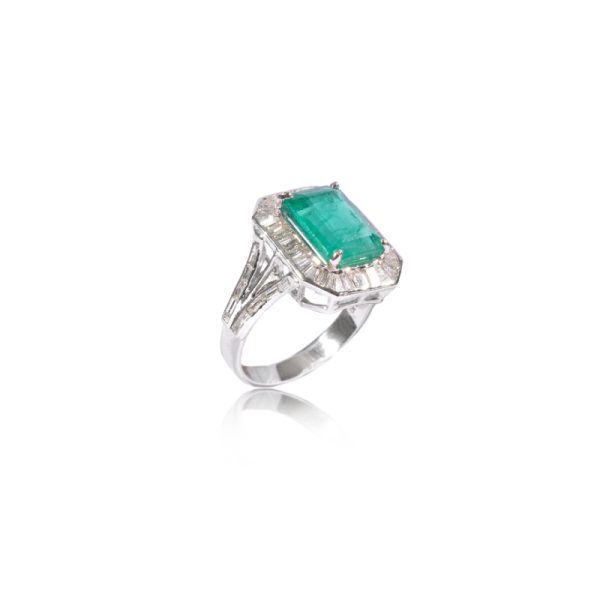Gamer Emotions and Diamond Brilliance: Parallels in Design
Design is an emotional language. Whether it’s the layout of a video game interface or the cut of a flawless diamond, the aim is to provoke reaction, engagement, and desire. At first glance, the emotional rush of gamers and the shimmering appeal of diamonds might appear worlds apart. Yet both rely heavily on aesthetics, anticipation, light manipulation, and the creation of immersive environments. This article explores how game design and jewelry design mirror each other in form, emotion, and function — and what creatives in both fields can learn from each other.
Emotional Triggers in Gamble Design
Pelaaminen perustuu palkkioiden ja haasteiden psykologiseen viitekehykseen. Suunnittelijat käyttävät värejä, ääntä, valaistusta ja animaatioita herättääkseen pelaajissa tunnetiloja – jännitystä, turhautumista, riemua tai jännitystä. Näitä tunteita koreografisoidaan tarkasti suunnitteluelementtien, kuten HUDien, hahmotaiteen, liikefysiikan ja erityisesti visuaalisten palautesilmukoiden (esim. kimallus palkkiota kerättäessä tai punainen välähdys vahinkoa otettaessa) avulla, kuten nähdään alustoilla kuten barz casino.
Menestyksekkäissä peleissä tunnematka on osa kokemustaloutta: pelaajat eivät ainoastaan kohtaa mekaniikkoja, vaan he tuntevat ne. Tunnekuohut liittyvät usein visuaalisiin vahvistuksiin – valonvälähdykseen jättipotin voittamisen yhteydessä, tasonnousun eleganttiin animaatioon tai harvinaisen esineen pudotuksen hohteeseen. Nämä vihjeet vahvistavat kokemusta kauneuden ja stimulaation kautta.
Diamonds and Emotion: A Legacy of Symbolism
Diamonds, on the other hand, communicate emotion through symbolism and craftsmanship. A diamond ring may signify eternal love, achievement, or luxury. Its cut and clarity are meticulously engineered to refract light and create visual brilliance — a literal sparkle that evokes awe and admiration.
Like in gaming, the visual payoff is crucial. Diamonds don't just sit passively; they perform. The way a stone catches and reflects light is central to its emotional effect. A well-designed piece of jewelry can create emotional resonance as powerfully as a dramatic game moment, using texture, weight, and brilliance in place of movement and narrative.
Parallels in Aesthetic Philosophy
While games aim for immersion and storytelling, and diamonds for timeless elegance, both follow similar design philosophies:
-
Focus on User/Viewer Experience
Whether it's a gamer holding a controller or someone trying on a diamond necklace, the emotional response is central. Design is successful only when it evokes engagement, admiration, or desire. -
Precision and Detail
Just as a game environment is crafted pixel by pixel, diamonds are cut facet by facet. The goal is perfection — or the illusion of it — through control of minute details. -
Play of Light
Light is the core material of both fields. Game engines simulate it, jewelry designers enhance it. The manipulation of shadow, shine, contrast, and refraction drives both the spectacle of a boss fight and the allure of a pendant. -
Narrative Embedded in Design
Great games have lore; great jewelry has legacy. Both often tell stories, even if symbolically — a family heirloom carries memory, just as a gamer’s avatar carries their journey.
Design Techniques Shared by Both Worlds
Jewelry and game design might use different tools — 3D modeling software versus diamond-cutting machines — but the strategies they use to emotionally engage their audiences often align. Here are a few shared principles:
-
Highlighting contrast and brilliance to create focal points
-
Using gradients, curves, and symmetry to signal elegance or danger
-
Crafting motion (real or implied) to hold attention
-
Embedding meaning in visual cues: colors, shapes, rarity indicators
List: Emotional Archetypes and Their Visual Representations
Here is a single list that highlights how both game design and diamond jewelry tap into the same emotional archetypes:
-
Victory – Gold glow in games / gleaming platinum settings in rings
-
Desire – Glimmering treasure chests / radiant-cut diamonds
-
Danger – Red warning lights / sharp claw-shaped designs in fashion jewelry
-
Mystery – Foggy landscapes / black diamonds and dark metals
-
Pride – Achievement badges / statement necklaces and crowns
-
Love – Heart motifs in UI / heart-shaped diamond cuts
-
Elegance – Smooth UI transitions / Art Deco symmetrical layouts
The Role of Rarity and Prestige
In both gambling and diamonds, rarity is emotionally powerful. A rare drop in a game provokes pride and excitement; a rare gem evokes status and exclusivity. This intersection of value and emotion is key to design strategy. When players or customers encounter something “not everyone can have,” they attach emotional significance to it — and the design must reflect this scarcity through aesthetic cues.
In the world of game skins and digital collectibles, parallels with jewelry are even more pronounced. Just as a rare gem might be set into a custom frame, a rare in-game skin is often adorned with special visual effects and intricate designs to showcase its uniqueness.
Luxury Meets Interaction
As gamification enters fashion and luxury markets, hybrid experiences become more common. Some high-end jewelry brands have launched AR apps that allow users to “try on” pieces virtually — using the same mechanics and visuals seen in character customization screens of video games. Similarly, some casinos use gem-inspired visuals and metaphors to evoke emotion, prestige, and anticipation — all rooted in traditional jewelry symbolism.
The overlap is further seen in themed slot machines and mobile games that directly incorporate jewel aesthetics, mimicking the sparkle, shape, and resonance of high-end stones to generate pleasure and excitement.
Towards a Unified Design Language
As digital experiences and luxury goods continue to blend, there is an opportunity to forge a new aesthetic that speaks both to interactivity and timeless design. Jewelry designers can learn from the dynamism of game interfaces, and game artists can draw inspiration from the craftsmanship and material logic of jewelry design. Together, they can shape visuals that not only look stunning but also feel meaningful.
This unity can be seen in the emerging trend of wearable tech that doubles as fashion — bracelets with LED stones that glow upon in-game achievements, or NFT-based jewelry collectibles that mirror in-game assets. The gamification of luxury and the beautification of gaming are converging.
Conclusion: When Sparkle Meets Strategy
In essence, both game and jewelry design aim to enchant. They engage users through emotion, light, and storytelling — one through interactivity, the other through symbolism and craftsmanship. Recognizing the emotional parallels between gamers and luxury enthusiasts opens the door to creative cross-pollination, where brilliance isn’t just visual — it’s experiential.
The sparkle in a diamond and the flash of an epic win are reflections of the same design goal: to stir the heart, capture attention, and make a moment unforgettable.



For Further details call us at +91 93215 47641

Categories
Collections
Info
Contact Us
Jewels By Queenie
410, Nirman Kendra,
Dr E Moses Road,
Famous Studio Lane
Mahalaxmi,
Mumbai – 400011
- Gems of Fortune: Precious Stones as Symbols of Progressive
- The Evolution of Design: From Mechanical Machines to Jewel-Inspired Aesthetics
- Jewelry Themes in Online Tournaments: A New Level of Glamour and Competition
- The Symbolism of Pendants and Amulets vs. the Symbolism of Game Icons
- Gift Campaigns: Jewelry as a Bonus for Deposits












